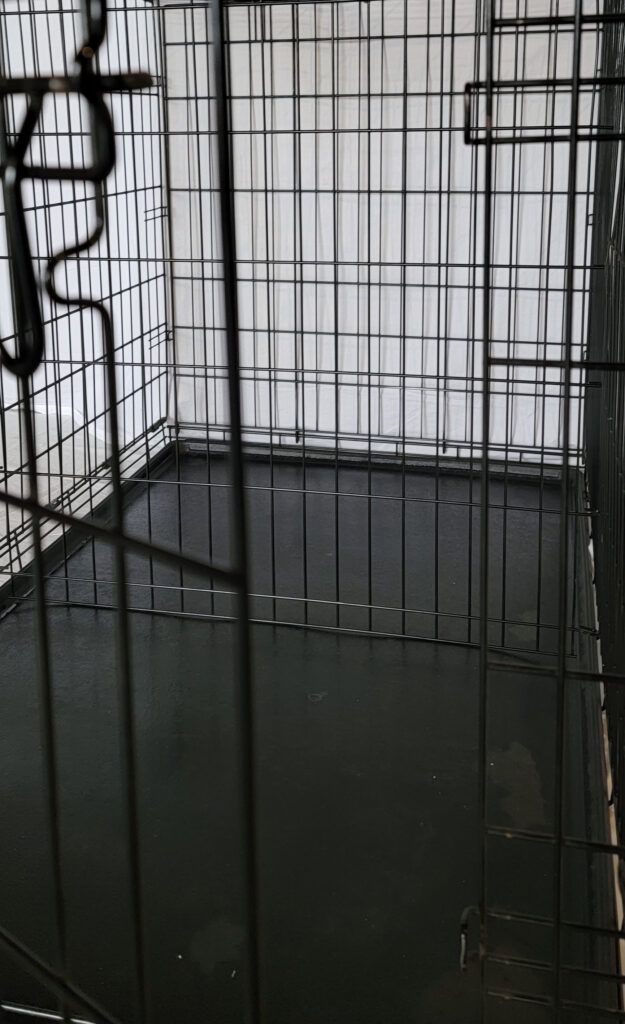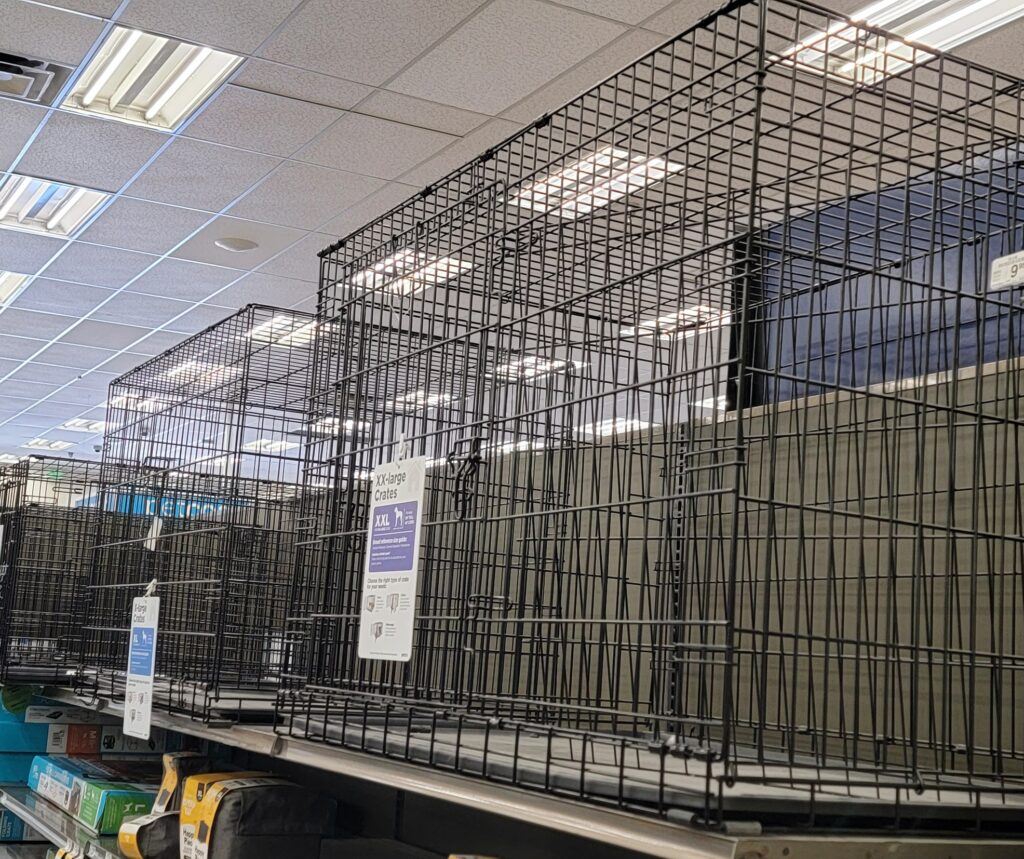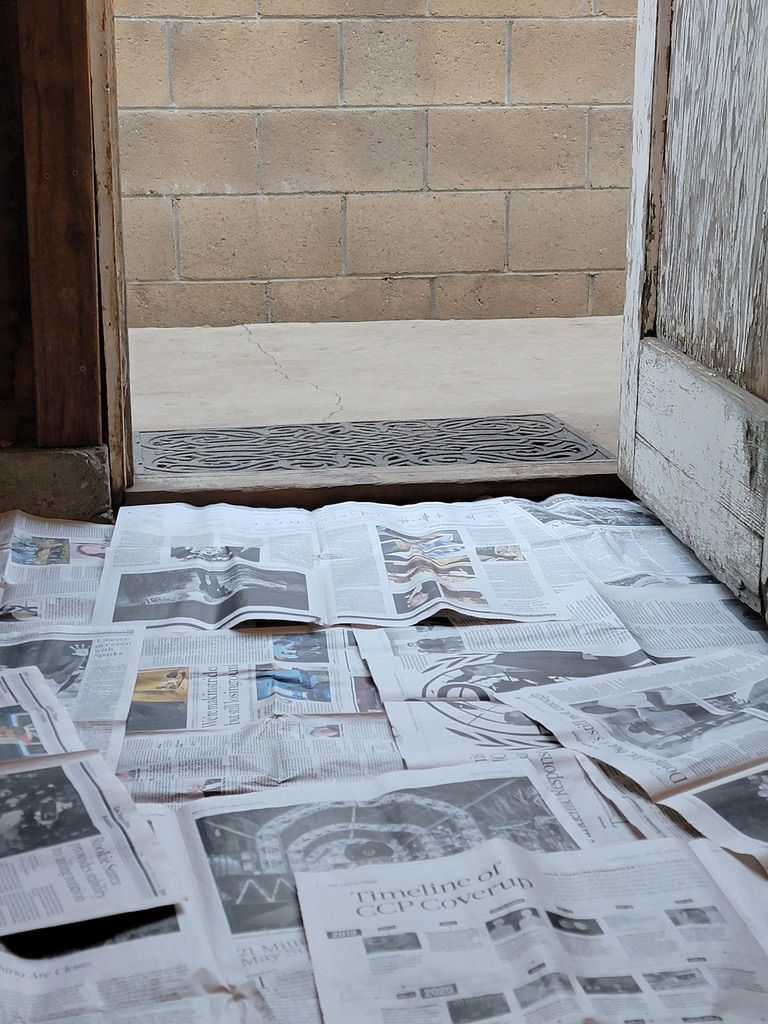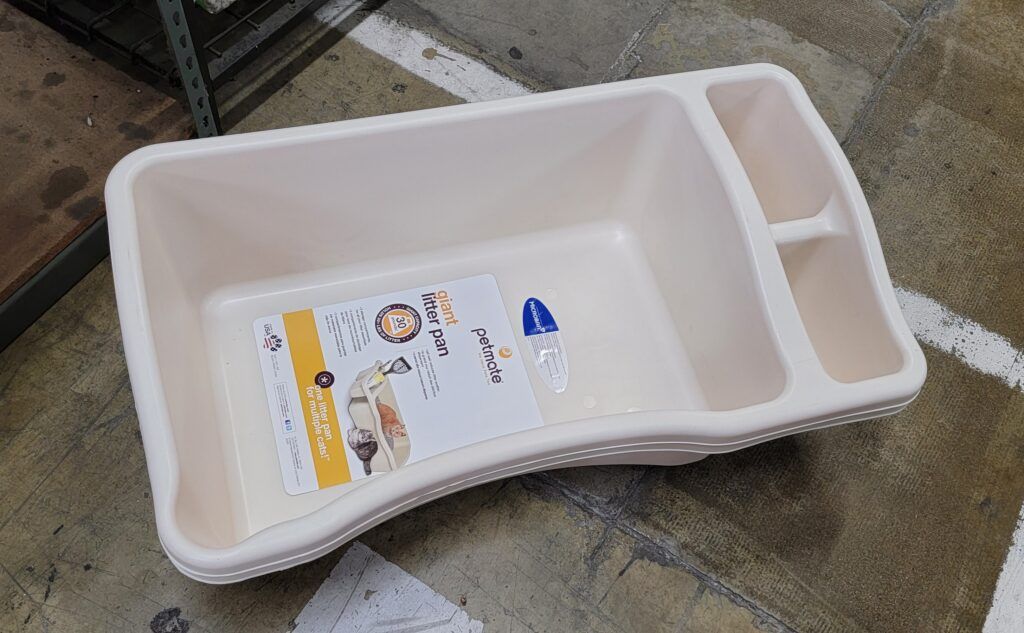House Breaking Basics
The whole primes to housebreaking is to educate your dog (in this case your puppy Rottweiler) of the proper place to relieve itself. In order to achieve success at housebreaking, there are several basics that should be followed consistently. Before attempting to housebreak your puppy, the first basic element must be a regularly scheduled feeding time. The feeding schedule should be consistently followed until mastered.
During the housebreaking process your puppy should have an established diet. Puppies have sensitive digestive systems at this stage of life. In order to prevent setbacks to housebreaking, do not make diet changes during the housebreaking process. In addition, you will need to consistently exercise your puppy by taking walks, playing, or training. Your puppy will need ample time to relieve itself during this time. Feeding and exercise will be interdependent during the housebreaking process.
The second, but very important basic element to housebreaking is: consistent praise and correction which should be given at every appropriate time. The appropriate time is when your puppy Rotti does what is expected, when expected, and where expected. This would be a time for praise. When your puppy goes in an area (in your presence) that is off limits, and has not been designated, warrants a correction.
Always remember to correct your puppy at the time of the offense. Dogs, let alone puppies, lack the ability to associate the present with the past. With that in mind, remember to always make corrections at the time of the event, not after the event. Housebreaking will require a great deal of effort in the beginning, but will be well worth it in the end. Housebreaking is simply teaching your puppy how, when, and where to potty.
Housebreaking Keys to Success
In order to have success during and after the housebreaking process there are some key factors to take into consideration. The first key to success is knowing that your puppy lacks the ability to control its bowels, or bladder. The Second key for success is keeping your puppy confined in a small area. Allowing your puppy free rein of your home will hinder progress. Restricting your puppy to a small area will set the table for the housebreaking process.

Letting your puppy have full run of your home in the beginning (the time your puppy first comes home)may cause him/her to see the housebreaking confinement as punishment when the training begins. Giving your puppy unlimited freedom from day one, and then suddenly taking it away by confinement, may cause your puppy to resent or rebel against being confined. It will be much more beneficial in the beginning to restrict your puppies freedom. Puppies are restricted when born in a whelping box in the beginning, so confinement until housebroken will make the training process smoother.
The third key to success is the investment of your time with your puppy. There is basic Time, and quality time to consider during housebreaking. Basic time is the time spent feeding, and cleaning up after your puppy. Quality time is the time you will spend playing, training, walking, and communicating with your dog.
Housebreaking Science
Housebreaking is nothing more than a psychological process of conditioning a dog to learn any given task. There are two types of conditioning. The first type of conditioning is classical conditioning, and the Second type is operant conditioning. Both methods of conditioning are based on the studies of three well-known psychologist, Ivan Petrovich Pavlov, Edward Lee Thorndike, and B. F. Skinner.
It is said that dogs are innately clean animals, possessing the instinct to keep their sleeping area soil free. However, you should not overestimate, or assume this innate instinct as a tool for total success. Based on my own personal experience, I have witnessed my unconfined Rottweiler urinating in close proximity to his outdoor sleeping area.
So keep in mind, if your puppy is left, or forced to remain in a soiled environment for a substantial amount of time, it may be perceived by the puppy as something that is expected by you. A puppy left in this type of environment can also be conditioned to soil its area on a regular basis.
Crate Training Your Rottweiler
Crate training a puppy is simple and straight forward. There are some concepts that must be followed consistently during the crate training process. Remember to always keep your puppies crate clean. Failing to keep your Rotti’s environment clean can have negative consequences. We as owners should keep our puppies environment clean at all times. Doing so will make the housebreaking process timely, and complete.
Why Crate Training is Not Cruel
Many people may shy away from the crate training method because they believe it to cruel. But in actuality it is helps to build confidence in your puppy. So there is no need to concern yourself with crate training being cruel.
In actuality, canine behaviorists believe crate training is one of the best methods of housebreaking. If you intend for your puppy to stay indoors, then this is the method for you. My Rotti usually stays inside during the night when the temperatures drop down to the lower digits, and spends most of his time outside during the summer. If your dog will spend his/her time solely inside, crate training is not the best housebreaking method for you.
Disadvantages of Crate Training
There are drawbacks to crate training, there are pros and cons. The cons of housebreaking your puppy with a crate are:
- The first con is the time which is required for housebreaking .
- The second con of crate training is the amount of money needed to purchase a crate.
- Crate training will take an extra hour daily, and four weeks to complete.
Advantages of Crate Training
If you plan on traveling with your Rottweiler, a crate is a tool of necessity. A crate is useful for small trips to the vet, the park, or any other short outing with your Rotti. I believe one of the number one advantages of crate training is providing a safe environment during travel.
Traveling with your puppy into the adult years by way of a crate will prevent you and your dog from being injured. Serious injuries occur to dog(s), and the occupants of the vehicle during travel on a regular basis. If you decide to pass on using a crate when you travel, do yourself a favor, find an alternative method of securing your Rottweiler when traveling. There are devices available for securing your dog while traveling.
Housebreaking a Rottweiler Puppy with a Crate
Before you begin housebreaking your puppy, make sure he/she has been properly introduced to the crate. If your puppy is not acclimated to the crate, the housebreaking process should not begin. Going forward may hinder the housebreaking process. Some puppies may be terrified of the crate for various reasons.

If you find this to be the case, the paper training method may be the better alternative. Or you might seek professional help to acclimate your puppy to the crate.
The Housebreaking Crate Method
- Your puppy must be four to six months of age before training begins.
- Your puppy must be acclimated to the crate.
- A daily housebreaking routine should be drawn up in the form of a schedule (the schedule should include play time, walks, feeding, and crate time).
- Crate should be placed in a suitable place that you select.
- Select a suitable housebreaking schedule of your choosing.
Your housebreaking schedule might resemble this sample:
6:30-Morning walk with your puppy
6:45 -Feeding time
7:00 -Play time
7:30-walk until your puppy pees/poops (last walk before crate placement)
8:00-Secure your puppy in the crate (off to work)
12:00-Return home for lunch to walk, feed, play, and walk again until your puppy goes. Secure puppy in crate return to work.
12:45-Return to work
5:15-Return home, walk puppy, feed, play, and walk again.
6:00-Basic training, quality time
8:00-Supervised play
9:00-Treat, last water before crating for the night
9:30-Quick walk
11:00-Long walk (last before crating)
11:30-Crate for the night
This sample schedule requires a lot of time for the dog owner. It may be to time consuming for some. However; the closer a routine is followed, the better the results. If you have other family members who can assist with the housebreaking responsibilities, the greater the flexibility. The housebreaking schedule should be a consistent seven day routine.
When time permits, you should allow for quality time playing, training, and just hanging out with your puppy. Crate training with this type of schedule should last for about 20-30 days with a puppy who is physically ready. sticking with the schedule is more important than the schedule itself. Dogs are creatures of habit. Your dog will conform to the schedule once it becomes habit. If you change the schedule often during the housebreaking process, there will be setbacks.
A very important element during this time is to ensure that your puppy is allowed time out of the crate in order to keep it clean. Puppies at this young age can only hold their urine/feces for roughly four hours or less. As your puppy becomes older, time in the crate will increase. An increase of time in the crate should not afford your puppy the opportunity to soil the crate often. A dog that remains in a soiled crate for an additional amount of time will result in housebreaking setbacks.
Crate Placement
The housebreaker should select an appropriate area for the crate placement. Some areas of crate placement are the kitchen, basement, or play room, on solid flooring. The area of the crate placement should be about 4X6 feet or larger, but not so large that it affords your puppy to relieve itself a substantial distance from the crate.
It is also recommended to place play items, and chew toys in the enclosed area that you have selected. During your interaction time with your puppy the crate door should be left open to allow free entry/exit. If, and when your puppy should attempt to relieve him/herself, take your puppy to the place you have selected for evacuation.
When your puppy has conducted his/her business, give lavish praise. When your puppy is done, return him/her to the restricted area. If you can not strictly supervise your puppy, crate confinement should be enforced until your arrival. If you return to a crate that has been soiled, “Do not,” punish your puppy. Puppies can not associate the past with the present.
Key Points to Housebreaking
- Take your puppy to evacuate immediately after feeding
- Take your puppy out whenever he/she shows a need to evacuate
- Take your puppy out at regular intervals throughout the day to evacuate
- Keep your puppy in a designated place to evacuate until your puppy has finished
- Praise your puppy whenever he/she goes in the appropriate place
- Correct your puppy for not evacuating in the proper place (only if witnessed)
Paper Training Your Rottweiler
As discussed in crate training, paper training is based on the same principles as crate training. Principle one: your dog wants nothing more than to please you for a job well done. Principle two is: your dog is essentially a clean animal for the most part.
Paper training is one of the oldest methods of housebreaking. It is the simplest, and cost very little. The only thing needed is newspaper, an area which is enclosed, and a floor that is easy to clean. Paper training also requires fewer hours compared to crate training.
In order to successfully paper train your Rotti, remember that your puppy must be at least three-four months of age.
The inside area you select for your puppies training should be an area frequently occupied by your dog. Newspaper, or paper of your choice should cover the entire floor surface (newspaper is cheapest). The area to be covered should be large enough for your puppy to explore and play, but not large enough for your puppy to excrete in a distant discrete corner. A 6X8 area is a good starting point for your puppy Rottweiler.
During the paper training process it is crucial that you take your puppy out of the confined area after meals, or when the puppy shows signs of preparing to relieve itself. The housebreaking area is where your puppy will spend most of its time during training.
Do not forget to leave a few toys in this area for your puppies amusement. Remember to regularly observe your puppy while in this area. When your puppy goes on the paper, give praise while relieving him/herself on the papers. In addition, remember to praise your puppy for going pee/poop outdoors as well.
Praising your puppy in this manner will reinforce this behavior as pleasurable to you the owner. When your dog sees that you are happy, this behavior will be a motivating aspect of paper training.
When you believe your puppy has demonstrated using the newspaper as a conditioned response, the newspaper should be removed gradually for several days. If your puppy picks a favorite spot to pee/poop, the newspaper should be removed in this direction if possible.

Since the newspaper will be slowly removed over time, there will naturally be an uncovered area remaining. This uncovered area should not be used by your puppy. Encouraging your puppy not to use this area is advisable. If your puppy happens to soil this uncovered area in your presence, a verbal reprimand should be used as a deterrent.
If your dog has used the uncovered area outside of your presence, a reprimand is not warranted. Dogs lack the ability to associate corrections for behaviors in the past. A verbal reprimand is all that is needed, physical punishment is always unnecessary for canine training.
When you have one sheet of newspaper remaining, it can be eliminated, and the training ends, or the newspaper can be placed closer and closer to a door leading outside. When you reach the door with the newspaper, it can be removed, the training has concluded.
If your puppy has any setbacks after the paper training, it should occur near the door, or close to it. If this happens, a reprimand is needed. The newspaper should be placed back at the door, and the training should continue for one-two days.
After this time period, the newspaper can be removed. Your puppy should be monitored for the urge to go pee/poop, at which time he/she should be let out immediately. If your puppy decides to relieve him/herself some distance from the door (inside), your puppy has not been completely housebroken.
Restrain your puppy in a small papered area as before. Continue to watch your puppy carefully while administering correction or praise as needed, and continue the process with removing the newspaper until one sheet remains. When you believe your puppy has mastered the training, the paper can be removed. Be sure to supervise your puppy for several days after the newspaper has been removed.
Disadvantages of Paper Training
- Your dog may believe it must only excrete in the home
- Some dogs may believe that they are only to excrete on the newspaper, and they might hold their excreta until inside the house after a long walk.
- The dog becomes conditioned to going in the house
- Paper training relies on trial and error
One remedy to these disadvantages are to praise your puppy lavishly when relieving him/herself outside. In the early stages of paper training, limit praise after one-two times when your puppy pees/poops on the newspaper. Remember, your puppy is to be conditioned to excrete outside the home, not inside your home.
Advantages of Paper Training
- One of the simplest housebreaking methods to teach your puppy
- The most cost effective housebreaking methods
- Only newspaper, and a room with a hard floor is needed
- Requires fewer hours of training
- Paper training is much more flexible than other housebreaking methods
Rottweiler Litter Box Training
The other possibility may be that you want your Rotti to be an indoor companion exclusively. I would only recommend leaving your Rottweiler inside exclusively if your dog is not easily bored, or does not suffer from anxiety.
It might be surprising, but you can train your Rottweiler puppy to use a litter box. Some dog owners may have homes that are small, and do not prefer their dog to poop on the grass, or any other area of their landscaping.
The litter box method of training is almost identical to paper training. Both methods have possible setbacks, and restrictions. Adoption of the litter box method of housebreaking must be based on your Rotti being solely an indoor dog, or indoor outdoor dog.

The Indoor-Outdoor Training Process
- Locate an area for the housebreaking (small breed 4×6, Lrg breed 6×8 area)
- Place paper in area to be used
- Line litter box with same type of paper used to cover floor
- Place litter box in a chosen spot
- Put toys, feeding bowls, and bed in area of training (remove feeding bowls when not in use)
- Provide regular observations of puppy in area
The indoor-outdoor litter box training is identical to the indoor only method, however; the exception is: taking your puppy out for walks, play, or training will be scheduled at a time your puppy is least likely to defecate outdoors.
Once your puppy defecates indoors, play, walking, and training are allowed. Praise your puppy after defecation inside and proceed outside for play. Your puppy will associate walking or training with going outside as a pleasurable experience.
When you take your puppy outside, watch for any attempts to defecate. If your dog is caught pooping outdoors, a verbal reprimand should be enforced. Allow your Rotti to urinate outdoors while indoors urination should be in the proper place (the litter box). Do not forget to praise your puppy when he does so.
Indoor Dog Only
- Locate an area for the housebreaking (6×8 area)
- Place paper in area to be used
- Line litter box with same type of paper used to cover floor, and place the litter box at the chosen location
- place toys, feeding bowls, and bed in the area to be used (remove feeding bowls when not in use)
- Provide regular observation of puppy in the area you have selected
- Praise puppy for going on paper (for a couple of days)
- Reduce papered area when you believe your puppy is becoming conditioned (leave a patch of bare floor)
- when and if your puppy selects a preferred area to poop, place litter box in that spot
- If your puppy does not select a preferred spot, leave litter box where it is
- Encourage your puppy to go only on the papered area, but ideally in the litter box (do not forger the praise while doing so)
- If your puppy is caught going in a spot that is off limits within the designated area, a verbal reprimand should be given
Disadvantages of Litter Box Training
- Laxed puppy owners who allow unnoticed defecation outside, may make it impossible to litter box train their puppies
- Indoor-outdoor litter box training is demanding
- It requires a considerable amount of time outdoors
- It requires a considerable amount of acute observation
Advantages of Litter Box Training
- The owner will obtain the desired results as any of the other housebreaking methods
Feeding Your Puppy During the Housebreaking Process
The most overlooked process of housebreaking your puppy is feeding. During the housebreaking process your puppies feeding schedule should remain constant. If any changes to the diet should occur, the changes should be no more than 30 minutes every other day until the desired time has been reached.
The optimal time to change your puppies diet is before the housebreaking process begins. And your puppy should have had this new schedule for at least one week. The housebreaking process can continue even if a change in diet schedule becomes necessary, if the change is not too drastic.
There is the possibility that the housebreaking process may be temporarily effected due to a diet schedule change. But, stopping the process and starting over might be more confusing to your Rottweiler puppy.
Summing It Up
In the beginning the housebreaking process will be time consuming, but fulfilling when followed as presented. I have used two of the three methods as described above. One was paper training, and the other was crate training. I had success with both, however, crate training was a little more challenging because I failed to restrict my puppy in a smaller area of the crate during training.
I found crate training to be more challenging than paper training. There are advantages and disadvantages to each method so choose wisely.
Every owner must decide for themselves, which method fits their lifestyle best. We all have different schedules, lifestyles, and housing arrangements. Only you know which method will work for your situation.
Bibliography
Kelly, Michael. Housebreaking and Training Your New Puppy. T.F.H. Publications, Inc., 1991
wikipedia.”https://en.wikipedia.org/wiki/Ivan_Pavlov
wikipedia.”https://en.wikipedia.org/wiki/Edward_Thorndike
wikipedia.”https://en.wikipedia.org/wiki/B._F._Skinner
